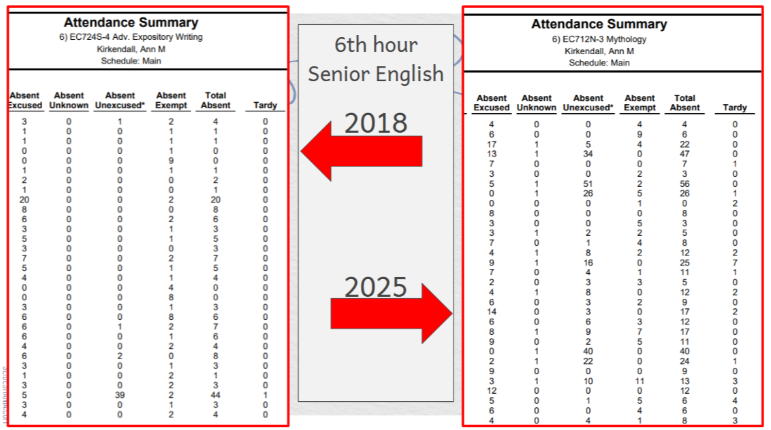In thirty minutes of spare time you could watch a TV show, you could run a few miles, or, if you’re West Ottawa Alumni Dan Broersma, you could fill up a bag with trash you found walking on the beach. Over the past year, Broersma has sacrificed many hours of free time and filled countless bags of trash, ultimately leading up to his unique and thought-provoking submission to ArtPrize 2018.
His piece titled “Be the Change,” located at Spectrum Butterworth Hospital, illustrates the environmental transformation he is seeking within the community. A large canvas photo of a brilliant sunset at Tunnel Park is encased by a homemade frame constructed from driftwood. The wide frame features a trough filled with trash that Broersma has picked up on the beaches of Lake Michigan. Broersma recalls that the evening he took the photo over a year and a half ago was one of the most gorgeous sunsets he has ever seen. However, the beauty of the sunset was juxtaposed by the trash he noticed scattered over the sand dunes.
Being a good green citizen, Broersma collected the litter around him and realized, “I was able to enjoy the beauty of the sunset while also doing some good.” A light bulb went off, and he immediately envisioned a project that would show people the impact they could make through a little effort.
Broersma gathered enough trash to fill the wooden frame surprisingly quickly. A task he thought would take several weeks or months to fulfill took only a few hours, with all of the trash for the frame gathered only two or three hundred yards from where he took the picture. However, he didn’t stop there.
Over the course of a year, Broersma ventured down to Tunnel Park countless times with a goal of cleaning the two mile stretch of beach between the Holland State Park and Tunnel Park. Even after enlisting the help of his daughter Hannah, he has never even come close to his goal because the sheer amount of trash fills his bags too quickly. In fact, Broersma began to realize that, “Wherever I sat [at the beach] I was never more than four to five feet from a piece of trash.“ He found everything from cigarette butts, to straws, to styrofoam, to forgotten flip flops.
Every single trip to the beach led to more trash, but Broersma was puzzled because he “was finding things that made no sense why they were there.” Pondering this, Broersma realized that the main source of the trash is not people leaving it on the beach. Rather, the majority of the litter comes from being washed out through ditches after heavy rain or storms. A pop can thrown out of a car window might find a new home at the beach a few weeks later. This realization helped explain the immense volume of trash he was finding at the beach, even outside of the tourism season. To proactively keep the beaches clean, Broersma also started collecting trash from ditches and other inland areas.
Months of hard work have led up to submitting the final product to ArtPrize. With his piece now open to the public, Broersma’s expectations are not, and never were, to win the competition. His mentality is “If I get ten people to pick up trash before it goes into the lake, that’s a win for me.”
Though he may not be taking home the prize money, he has found admirable success through inciting conversation and action around a serious issue. Spending time near the artwork, listening to the conversation, Broersma has seen and heard a variety of reactions. Incredulous gasps and head shakes are not uncommon. Neither is individuals reaching out to share their love for his piece, several admitting they never knew how much trash was really around, and now they notice it everywhere. Even better, they are consciously making an effort to pick it up. Broersma admits that he is not an artist, dabbling in photography and art as a hobby, not a job. So when he hears comments like, “wow this is a cool piece,” he confides that at times he is dubious. Nevertheless, he is proud of the discussion and action that he is jump-starting.
It’s important to Broersma to note that “This is not a shame piece.” He is not placing the blame on people for not picking up their trash, rather reminding them of the potential they have to improve their community and environment. The art he created is not to spread awareness, as most people are cognizant of the litter that resides on the beaches. Instead, he aims to instill some action behind that awareness. Broersma hopes that looking at the piece will inspire people to think, “If this is what just one person can do, imagine what all of us can accomplish.”
If you are interested in helping Broersma clean up our beaches, he is currently running a social media contest. Post a picture of trash you have collected onto Instagram or Facebook, tag two people, and use the hashtag #ArtPrizeBeTheChange, and you will be in the running to win another copy of the canvas photo used in his piece. Go out there and be the change!







